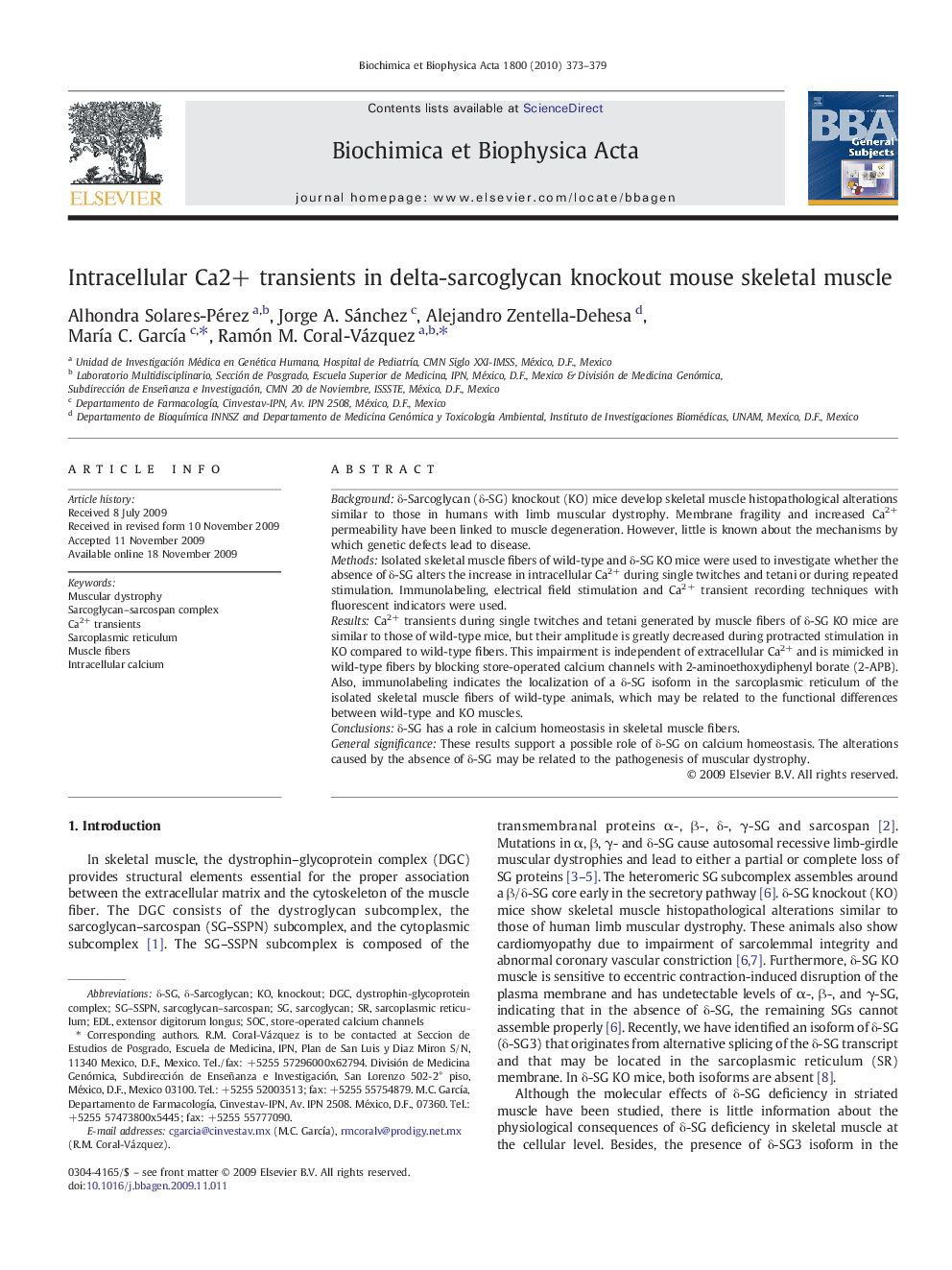| Article ID | Journal | Published Year | Pages | File Type |
|---|---|---|---|---|
| 1948139 | Biochimica et Biophysica Acta (BBA) - General Subjects | 2010 | 7 Pages |
Backgroundδ-Sarcoglycan (δ-SG) knockout (KO) mice develop skeletal muscle histopathological alterations similar to those in humans with limb muscular dystrophy. Membrane fragility and increased Ca2+ permeability have been linked to muscle degeneration. However, little is known about the mechanisms by which genetic defects lead to disease.MethodsIsolated skeletal muscle fibers of wild-type and δ-SG KO mice were used to investigate whether the absence of δ-SG alters the increase in intracellular Ca2+ during single twitches and tetani or during repeated stimulation. Immunolabeling, electrical field stimulation and Ca2+ transient recording techniques with fluorescent indicators were used.ResultsCa2+ transients during single twitches and tetani generated by muscle fibers of δ-SG KO mice are similar to those of wild-type mice, but their amplitude is greatly decreased during protracted stimulation in KO compared to wild-type fibers. This impairment is independent of extracellular Ca2+ and is mimicked in wild-type fibers by blocking store-operated calcium channels with 2-aminoethoxydiphenyl borate (2-APB). Also, immunolabeling indicates the localization of a δ-SG isoform in the sarcoplasmic reticulum of the isolated skeletal muscle fibers of wild-type animals, which may be related to the functional differences between wild-type and KO muscles.Conclusionsδ-SG has a role in calcium homeostasis in skeletal muscle fibers.General significanceThese results support a possible role of δ-SG on calcium homeostasis. The alterations caused by the absence of δ-SG may be related to the pathogenesis of muscular dystrophy.
